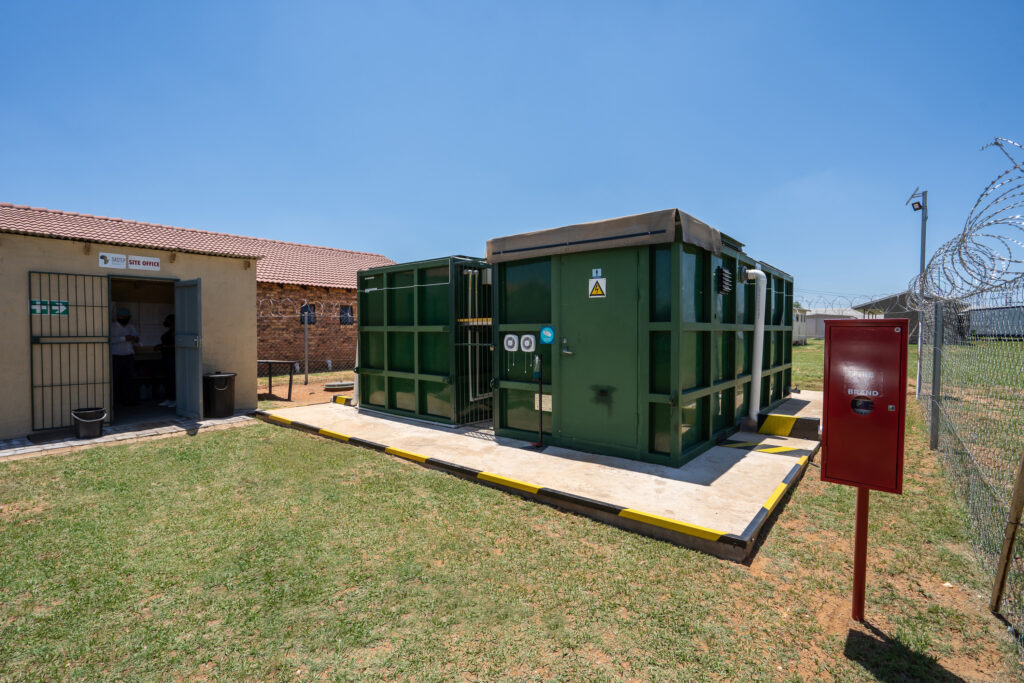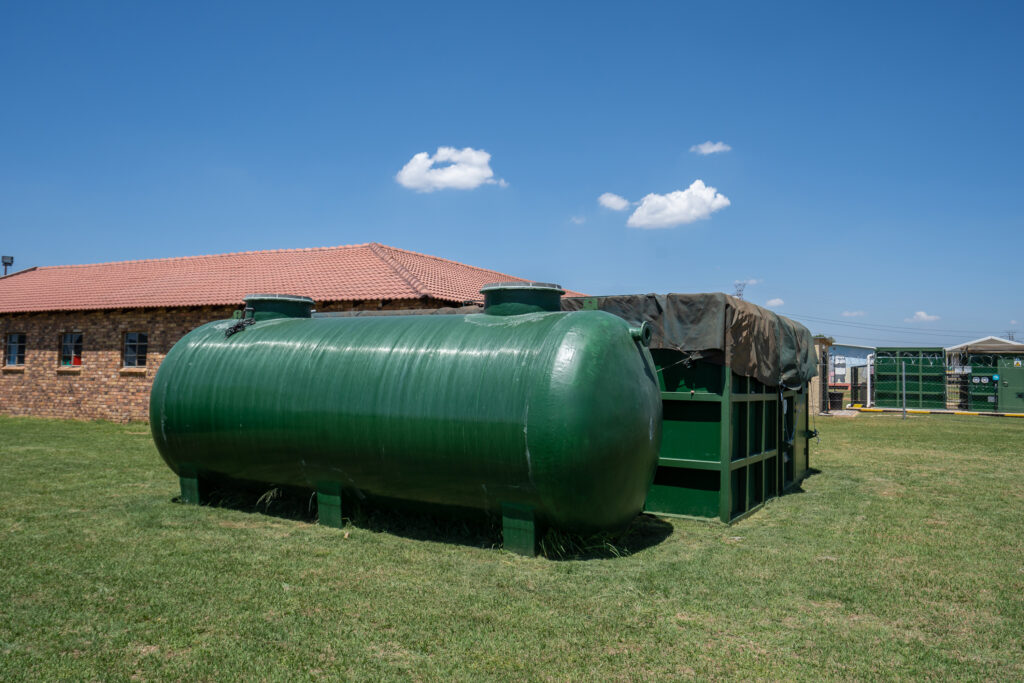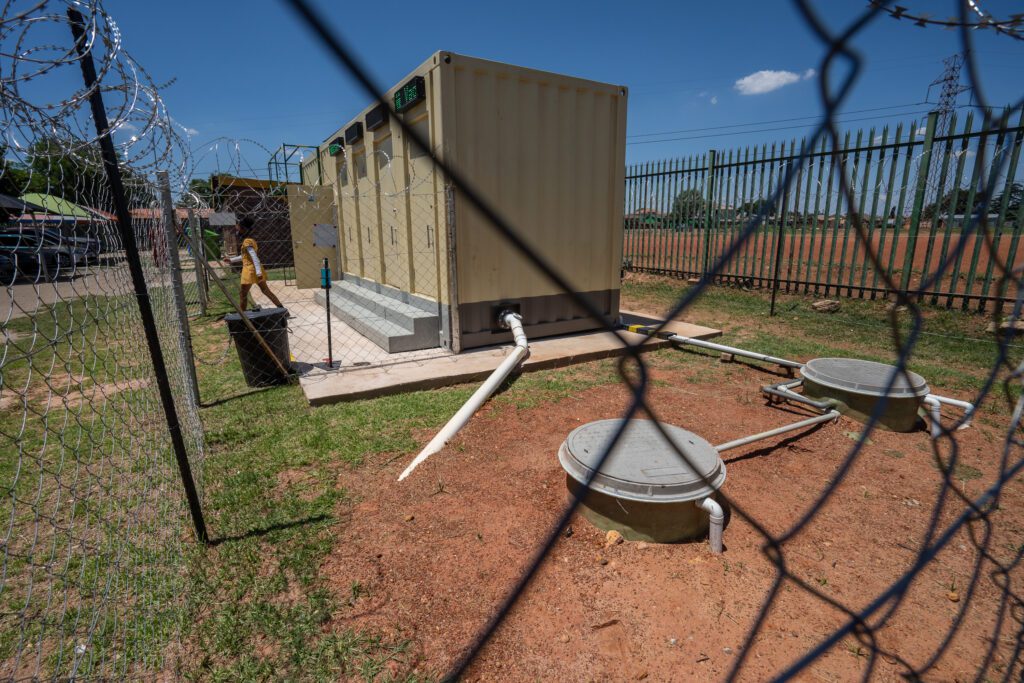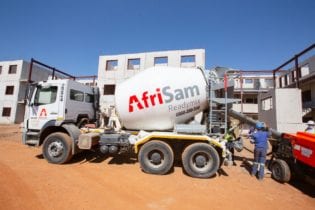The existing toilet use paradigm is water intensive and designed to use a high volume of flush water to transport human waste away.
Reduced-flush water toilets are possible and will contribute to decreased water use; however, with water-efficient flush toilets, there is poor uptake in public and private sectors. The Water Research Commission (WRC) has pioneered various initiatives to reduce flush volumes in toilet systems, resulting in innovations such as the pour-flush and low-flush toilets. Low-flush, water-efficient toilets are designed to use low amounts of water for flushing between 1 to 2.5 litres a flush, which, if upscaled, would result in significant nett water savings on a country scale, where nearly 30% to 40% of all domestic water supply is used for flushing. Furthermore, the locally manufactured low-flush toilets hold potential to create new employment across the value chain and contribute to reducing capital expenditure on greenfield projects, while also improving the capacities of burdened existing sewerage and wastewater systems. A large volume of South Africa’s water consumption is used for flushing toilets. Water-efficient toilets minimise the amount of water used to convey the waste collected in the bowl to the back-end treatment, conveyance and collection system. “Close to 11 million households have access to a flushing toilet – using mostly 9 to 12 litres per flush. If we can reduce the amount of flush water used by 50%, we could potentially save up to 400 Mℓ of water per day. It is imperative that we all learn how much water we are using, especially regarding sanitation. If we can manage the amount of fresh water that goes down the drain, we have a better chance of securing water for other uses,” explains Akin Akinsete, programme manager, WRC.
- Many plumbers do not stock or fit low-flushing toilet pedestals because of the perception that they do not work.
- There is concern that low flush volume is insufficient to transport waste from the toilet to the conveyance system, and human waste coats the conveyance pipe, causing odours and obstructions. Recent studies and those emanating from the Cape Town drought have proven otherwise.
- There are also concerns around the impact of low flush volume on wastewater treatment plants (WWTPs); however, with new technology, there are now examples where low-flush toilets have been installed with a sewer at standard gradient and no additional blockages have been noted.
- User concerns centre around noise, high installation and maintenance costs, and the lack of readily available parts, especially in rural areas.
- There is a lack of financial incentives for people to use low-flush systems. Rebates, grants and retrofits should form part of municipal pricing.
- Another challenge is the general lack of data relating to the uptake of low-flush toilets and further studies are needed, especially in low-income households.
- The public is not exposed to this technology.
- Very few low-flush toilets are already on the market and available for purchase.
- Terminology is not standardised. This creates a disconnect and confusion. Low-flush terminology should be standardised across all literature, standards and documents. There are also ineffective rating systems and there is no clear, leading authority to manage the process forward.
- Most policies do not make provision for low-flush water toilets. Low-flush toilets are not included in the National Building Regulations and the Guidelines for Human Settlements and Planning (Red Book). They need to be more specifiC and defined. Critically, SANS 10400 needs to be expanded with part XB – ‘efficient water use in buildings’ – which will then form part of the national building regulations.
- Most small to medium municipalities have developed their by-laws from generic ones made available from the Department of Water and Sanitation in 2005 that do not accommodate low-flush technology or water efficiency. Fortunately, most metros have by-laws that do accommodate low-flush technology.
- Non-compliant products can be legally imported and manufactured – this gap must be closed. National standards are required to assist manufacturers and a labelling system on products can provide guidance on rating and the rate of water consumption.
- Unprofessional plumbers must be held accountable for the products they fit.

the WWTPs. The performance testing protocol is not designed to replace SANS1722:2011 – it is built upon the main performance tests within the standard. It provides an overview of the performance of the pedestals (eight low-flush pedestals were tested). The performance testing protocol can be used as a starting point, where pedestals can be tested against different attributes under different contexts. This will assist municipalities and developers to identify the most suitable pedestal for a specific environment. Tests included:
- Flush volume – measuring water used per flush.
- Full flush performance – clearing the pan in a single full flush.
- Paper removal performance – clearing of toilet and newspaper from the pan.
- Mixed-media flush performance – clearing simulated faeces and toilet paper from the pan.
- Bowl-washing performance – removing the surface coating of sawdust from the pan.
- Dye test performance – diluting dye in the water trap.
- Splash performance – ensuring that flushing does not result in water splashing on to the floor.
- Drain line transport performance – ensuring simulated faeces do not block drainage pipework.
linked to the reduced volume of water
for flushing. Three low-flush and one international vacuum pedestals all performed well and passed six out of the eight tests. This demonstrates that the low-flush pedestals on the market and in late-stage development are able to perform well – if not better than the existing pedestals on the market. While the development of the testing protocol can be viewed as holding low-flush pedestals to higher standards than the existing water-intensive pedestals, they can also be used as a driver to encourage new innovations and outperform existing systems.








